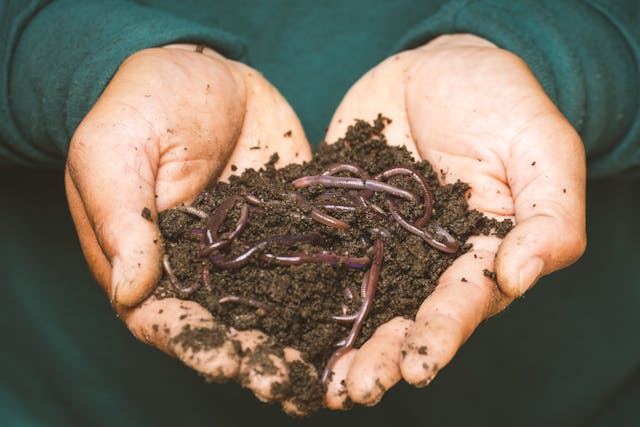Exploring the Relationship Between Soil Microorganisms and Apple Tree Health

The health and productivity of fruit trees are closely tied to the quality of the soil in which they grow. While soil nutrients like nitrogen, phosphorus, and potassium have long been considered essential, recent studies and gardening practices have shifted focus toward a more intricate and dynamic component of soil health: microorganisms. These tiny, often invisible organisms play a pivotal role in supporting fruit trees by enhancing nutrient uptake, improving resistance to diseases, and fostering a thriving soil ecosystem.
For those who are eager to nurture their own orchards or small gardens, understanding the role of soil microorganisms can be a game-changer. As one nursery specialist from CRJ FruitTrees explains, “Healthy soil is teeming with life, and it’s this unseen biodiversity that forms the foundation of strong, resilient fruit trees. When you buy fruit trees like for example stepover apple trees and plant them, it’s essential to consider not just the type of tree but also the condition of the soil it will call home.” With this advice in mind, let's delve deeper into the fascinating relationship between soil microorganisms and fruit tree health.
The Role of Soil Microorganisms in Nutrient Cycling
One of the most vital functions of soil microorganisms is their role in nutrient cycling. This natural process ensures that essential elements like nitrogen, phosphorus, and potassium are made available to fruit trees. Among the many microorganisms present in healthy soil, bacteria and fungi are key players.
Nitrogen-fixing bacteria, for example, convert atmospheric nitrogen into forms that plants can absorb. This is particularly beneficial for fruit trees, which require a steady nitrogen supply to support vigorous growth and fruit production. Mycorrhizal fungi, on the other hand, form symbiotic relationships with tree roots, extending their reach through vast networks of hyphae. These fungi help the trees access phosphorus and other micronutrients that might otherwise remain locked in the soil.
The mutual benefits between soil microorganisms and fruit trees highlight the importance of maintaining a living, active soil environment. Without these microorganisms, even the richest soil could fail to provide adequate nutrition, leading to stunted growth and poor fruit yields.
Enhancing Disease Resistance Through Microbial Diversity
Fruit trees are susceptible to various diseases, from fungal infections like apple scab and peach leaf curl to bacterial afflictions such as fire blight. However, soil microorganisms can act as a natural defense system, reducing the likelihood and severity of these issues.
Beneficial bacteria and fungi can suppress harmful pathogens by competing for resources, producing antimicrobial compounds, or directly attacking the invaders. A diverse soil microbiome creates a balanced environment where no single harmful organism can dominate. This microbial competition is crucial for preventing soil-borne diseases, which can devastate fruit trees and reduce crop yields.
Research also suggests that some microorganisms can stimulate a tree’s natural immune responses. This induced resistance helps fruit trees respond more effectively to stressors, whether they are biotic (pests and pathogens) or abiotic (drought and poor soil conditions).
Soil Structure and Water Retention: Microorganisms at Work
Beyond nutrient cycling and disease resistance, soil microorganisms play an integral role in shaping soil structure. The physical condition of the soil—its texture, porosity, and ability to retain moisture—directly affects fruit tree health.
Microbial activity helps to bind soil particles together, forming aggregates that improve soil structure. These aggregates create pores that allow air and water to move freely, ensuring that tree roots receive the oxygen and hydration they need. Furthermore, fungi like mycorrhizae can enhance water retention by expanding the soil’s surface area and reaching water sources that tree roots alone could not access.
Improved soil structure not only benefits the trees during dry spells but also reduces the risk of waterlogging after heavy rains. In both scenarios, maintaining proper moisture levels is crucial for the healthy development of fruit trees and their fruiting cycles.
Organic Matter: Feeding the Soil Microbiome
The health of soil microorganisms depends heavily on the presence of organic matter, which serves as their primary food source. Compost, leaf litter, and other organic amendments introduce carbon-rich materials that fuel microbial activity.
As microorganisms break down organic matter, they release nutrients in forms that fruit trees can readily absorb. This process, known as mineralization, is essential for maintaining a steady nutrient supply throughout the growing season. Additionally, the decomposition of organic material helps to sequester carbon in the soil, improving its overall fertility and sustainability.
Gardeners who prioritize organic soil management often find that their fruit trees thrive. Adding compost or well-rotted manure to the soil not only boosts microbial populations but also improves soil structure and nutrient availability. For those looking to buy fruit trees, investing in soil health before planting can lay the groundwork for long-term success.
The Impact of Soil pH on Microbial Activity
Soil pH is a critical factor that influences the composition and activity of soil microorganisms. Different types of microbes thrive at varying pH levels, and maintaining the optimal range is crucial for fostering a balanced microbial community.
Fruit trees, such as apple, cherry, and plum, generally prefer slightly acidic to neutral soil (pH 6.0 to 7.0). Within this range, beneficial microorganisms like nitrogen-fixing bacteria and mycorrhizal fungi can flourish, supporting the trees’ nutritional and water needs.
If the soil pH drifts outside the ideal range, it can limit microbial diversity and activity. For instance, overly acidic soils (below pH 5.5) may suppress beneficial bacteria while promoting fungi that could become pathogenic. Conversely, alkaline soils (above pH 7.5) might inhibit the availability of certain nutrients, even if they are present in the soil.
Regular soil testing and adjustments using lime or sulfur can help maintain an ideal pH, ensuring that the soil microorganisms can do their job effectively.
Modern Practices for Supporting Soil Microorganisms
The importance of soil microorganisms in gardening and agriculture has prompted a growing interest in practices that support microbial health. Many traditional and modern techniques aim to protect and enhance soil biodiversity, benefiting fruit trees in the process.
One such practice is minimal tillage. Excessive tilling can disrupt the delicate networks of fungi and bacteria, reducing their populations and hampering their ability to function. By minimizing soil disturbance, gardeners can preserve these networks and foster a more stable soil environment.
Another approach is the use of cover crops, which provide organic matter and protect the soil from erosion. Leguminous cover crops like clover and vetch can fix nitrogen, enriching the soil while promoting microbial diversity. When these crops are cut back and left as mulch, they continue to feed the soil ecosystem.
Finally, the avoidance of synthetic chemical inputs, such as pesticides and herbicides, is crucial for maintaining a healthy soil microbiome. Many of these chemicals can harm non-target organisms, reducing microbial diversity and disrupting the soil's natural balance. Instead, gardeners can adopt integrated pest management strategies and organic amendments to nurture their soil.
Buying Fruit Trees: Setting the Stage for Success
When it comes to planting fruit trees, the health of the soil is just as important as the quality of the tree itself. While selecting disease-resistant and well-adapted varieties is essential, ensuring that the soil is rich in microbial life can make a significant difference in the tree’s long-term performance.
For those planning to buy fruit trees, it’s wise to prepare the planting site in advance. Incorporating compost, testing and adjusting the soil pH, and allowing time for microbial populations to establish can create an ideal environment for the young trees. Additionally, sourcing fruit trees from reputable nurseries, such as CRJ FruitTrees, ensures that you start with healthy, vigorous plants that are well-suited to your local conditions.
Conclusion: The Invisible Allies in Your Garden
The relationship between soil microorganisms and fruit tree health underscores the complexity and interconnectedness of natural systems. While these tiny organisms may go unnoticed, their impact on tree growth, disease resistance, and fruit production is profound.
By understanding and nurturing the soil microbiome, gardeners can unlock the full potential of their fruit trees, creating vibrant and productive orchards. Whether you’re an experienced gardener or just starting your journey, investing in soil health is an investment in the long-term success of your garden. And as any seasoned grower will attest, the rewards of healthy, thriving fruit trees make the effort well worth it.




